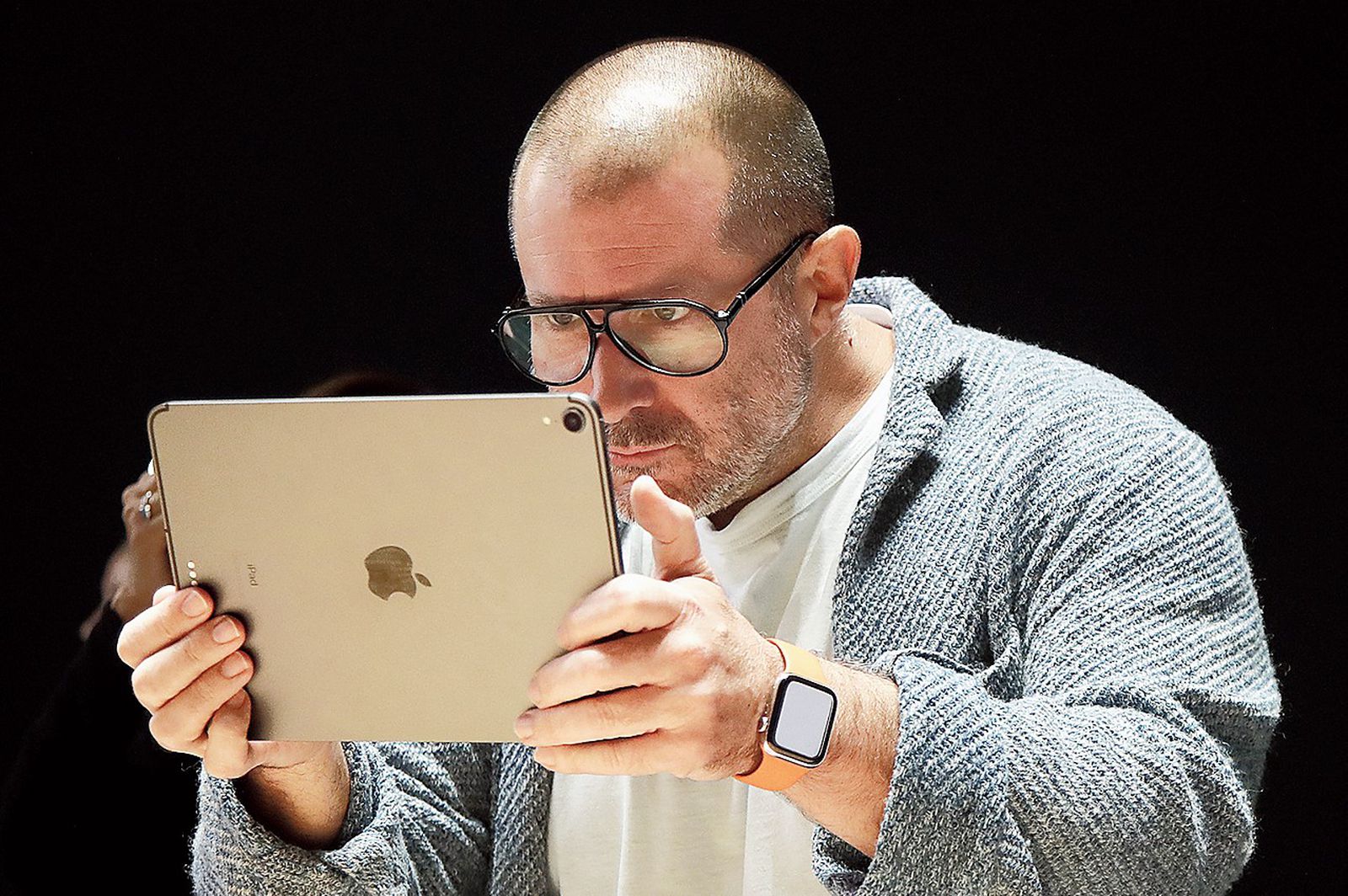OpenAI's Pursuit Of Jony Ive's AI Expertise: A Market Analysis

Table of Contents
Jony Ive's Design Philosophy and its Relevance to AI
Jony Ive, the former chief design officer at Apple, is renowned for his minimalist and user-centric design philosophy. His designs are characterized by a focus on simplicity, elegance, and intuitive user interfaces. This approach, so successful in the consumer electronics realm, is highly relevant to the often-complex and intimidating world of artificial intelligence. Ive's emphasis on seamless user experiences translates directly to the need for more accessible and user-friendly AI tools.
- Focus on simplicity and elegance in design: Ive consistently prioritized clean lines and intuitive functionality over excessive features. This approach could be crucial in making complex AI algorithms more approachable to the average user.
- Emphasis on intuitive user interactions: Ive’s designs prioritize ease of use. Applying this to AI means creating interfaces that require minimal technical expertise, encouraging broader adoption.
- Prioritization of user experience over technical complexity: His designs always placed the user's needs at the forefront. For AI, this translates to designing systems that are not only powerful but also enjoyable and easy to navigate.
- Examples from Apple products: The iPod, iPhone, and iPad – all testaments to Ive's focus on intuitive design and seamless user experience – serve as compelling examples of how sophisticated technology can be made accessible and desirable. This level of user-centric design is sorely needed in the current AI landscape.
Market Implications of OpenAI's Potential Acquisition
The potential collaboration between OpenAI and Jony Ive carries significant market implications. It could fundamentally reshape how we perceive and interact with AI.
- Improved user interfaces for AI-powered tools and applications: Ive's expertise could lead to a new generation of AI tools with more intuitive and visually appealing interfaces, making them more accessible to a wider audience.
- Enhanced accessibility and user-friendliness of AI systems: By focusing on user experience, the collaboration could significantly improve the usability of AI systems, overcoming a major barrier to broader adoption.
- Increased market appeal and broader adoption of OpenAI's products: More user-friendly AI products translate to greater market appeal and increased adoption rates across various sectors, from healthcare to finance.
- Potential disruption of existing AI design paradigms: The partnership could challenge existing design conventions in the AI industry, ushering in a new era of user-centric AI design.
Challenges and Risks in Integrating Design and AI
While the potential benefits are significant, integrating design and AI expertise presents considerable challenges.
- Balancing aesthetic considerations with functional requirements of AI: Finding the right balance between beautiful design and the functional needs of complex AI algorithms will be a delicate task.
- Potential for creative clashes between designers and engineers: Merging the distinct perspectives of designers and AI engineers requires careful management and a shared vision.
- Difficulties in anticipating user needs in a rapidly evolving AI landscape: Predicting future user needs in the dynamic AI market will require continuous iteration and adaptation.
- Risk of design overshadowing the core AI technology: The focus on design should not overshadow the underlying technological advancements driving AI progress.
Future Outlook and Predictions
The potential long-term impact of OpenAI's pursuit of Jony Ive's AI expertise is substantial.
- Rise of more user-friendly and aesthetically pleasing AI products: We can expect a wave of AI products that are not only powerful but also aesthetically pleasing and easy to use.
- Increased competition among AI companies to secure top design talent: Other AI companies will likely seek to emulate OpenAI's strategy, driving up demand for top design talent.
- Development of new design paradigms specifically for AI applications: This collaboration could spur the development of entirely new design principles tailored to the unique challenges and opportunities of AI.
- Shift in consumer expectations towards AI-driven products: Consumers will increasingly expect AI products to be not only functional but also aesthetically pleasing and user-friendly.
Conclusion
OpenAI's pursuit of Jony Ive's expertise signifies a pivotal moment in the AI industry. The collaboration holds immense potential to revolutionize AI design, leading to more user-friendly and accessible AI technologies across multiple sectors. However, challenges in integrating design and engineering remain. The success of this partnership will depend on the ability to navigate these challenges and create truly user-centric AI experiences.
Call to Action: Stay tuned for further developments in OpenAI's pursuit of Jony Ive's AI expertise as this partnership shapes the future of AI design and user experience. Follow our blog for more in-depth analysis on the impact of this collaboration on the market and the evolution of AI design.

Featured Posts
-
 News Corp An Underappreciated Media Conglomerate With Growth Potential
May 24, 2025
News Corp An Underappreciated Media Conglomerate With Growth Potential
May 24, 2025 -
 Dylan Dreyers Today Show Rift Details Following Recent Incident
May 24, 2025
Dylan Dreyers Today Show Rift Details Following Recent Incident
May 24, 2025 -
 Tolkovanie Snov I Goroskopy Predskazaniya Buduschego
May 24, 2025
Tolkovanie Snov I Goroskopy Predskazaniya Buduschego
May 24, 2025 -
 Boe Rate Cut Probabilities Decline Following Uk Inflation Data Pound Gains
May 24, 2025
Boe Rate Cut Probabilities Decline Following Uk Inflation Data Pound Gains
May 24, 2025 -
 Ultimate Porsche Macan Buying Guide Models Specs And Pricing
May 24, 2025
Ultimate Porsche Macan Buying Guide Models Specs And Pricing
May 24, 2025
Latest Posts
-
 Columbus Man Found Guilty Child Sex Crimes Verdict
May 24, 2025
Columbus Man Found Guilty Child Sex Crimes Verdict
May 24, 2025 -
 Wrestle Mania 41 Golden Championship Belts On Sale Memorial Day Weekend Ticket Sales
May 24, 2025
Wrestle Mania 41 Golden Championship Belts On Sale Memorial Day Weekend Ticket Sales
May 24, 2025 -
 The Last Rodeo Movie Review Honest Assessment Of A Classic Theme
May 24, 2025
The Last Rodeo Movie Review Honest Assessment Of A Classic Theme
May 24, 2025 -
 The Last Rodeo A Familiar Yet Powerful Story
May 24, 2025
The Last Rodeo A Familiar Yet Powerful Story
May 24, 2025 -
 The Last Rodeo Review A Touching Bull Riding Drama
May 24, 2025
The Last Rodeo Review A Touching Bull Riding Drama
May 24, 2025
